Years ago I heard a definition that really captured my curiosity. It was a basic definition for a skill that we all use daily, but it was focused on the critical needs of young children.
Literacy = Talk + Play
Over the years I have read many articles and books, and studied a lot of research about early literacy – the skill development for young children that will grow with them (and pay enormous dividends) throughout their lives. Early literacy, or pre-literacy, does not involve flashcards or the recital of letters and numbers. It is, as the definition states, the playful engagement of everyday experiences, accompanied by a lot of conversation from caring adults.
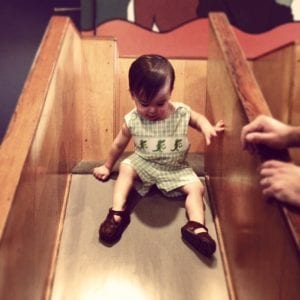 The Louisiana Children’s Museum, the oldest children’s museum in a four state area and the state’s primary resource developed specifically for young children and their parents and open to the public, has five strategic initiatives. The one most closely linked to cognitive development is literacy. We have learned that literacy – reading and writing – is developed through active and consistent engagement of language and child-centered play. A child’s healthy preparation for school–readiness by age five depends largely on the amount of conversation and play he has had in the first thirty six months of life. Research shows that the language skills of three-year-olds track well into the school years, and help predict the academic performance of a child’s school career.
The Louisiana Children’s Museum, the oldest children’s museum in a four state area and the state’s primary resource developed specifically for young children and their parents and open to the public, has five strategic initiatives. The one most closely linked to cognitive development is literacy. We have learned that literacy – reading and writing – is developed through active and consistent engagement of language and child-centered play. A child’s healthy preparation for school–readiness by age five depends largely on the amount of conversation and play he has had in the first thirty six months of life. Research shows that the language skills of three-year-olds track well into the school years, and help predict the academic performance of a child’s school career.
Early literacy starts at birth. It includes language development, verbal vocabulary, and speech development. Below are some tips you can incorporate into playtime to prepare your child for a life of literacy.
- TELL stories – ones from your life or imagined ones
- SHARE books – bring them to life with dramatic storytelling
- SING songs – children love silly songs and music
- TALK to one another during everyday tasks
- POINT out and NAME objects around you
- PUT ON a puppet show
- CREATE art and describe what you or your child made
- RHYME simple words with a playful voice
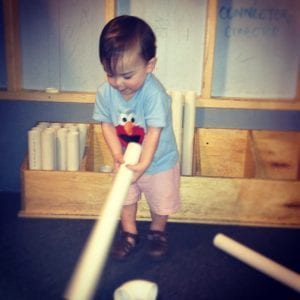 In order to address this critical need in a child’s development, the LCM has just opened our newest exhibit – the Talk and Play Center. In this second floor exhibit, we offer environments that address the role that adults have in supporting the four building blocks of children’s language development – Vocabulary, Storytelling, Phonetics, and Deciphering. Through the Sapling Stage, Poet-Tree, Scribble Station, Caldecott Cottage and Cajun Cottage environments, the Museum has prepared experiences that are essential for building key skills. In addition to offering hands-on learning, we’ve prepared tips and prompts for parents, grandparents and teachers to use after an engaging visit to our new space.
In order to address this critical need in a child’s development, the LCM has just opened our newest exhibit – the Talk and Play Center. In this second floor exhibit, we offer environments that address the role that adults have in supporting the four building blocks of children’s language development – Vocabulary, Storytelling, Phonetics, and Deciphering. Through the Sapling Stage, Poet-Tree, Scribble Station, Caldecott Cottage and Cajun Cottage environments, the Museum has prepared experiences that are essential for building key skills. In addition to offering hands-on learning, we’ve prepared tips and prompts for parents, grandparents and teachers to use after an engaging visit to our new space.
Come talk – and play – in our very special space. It will be a fruitful investment for you AND your child!
A mom’s perspective
While we haven’t quite hit the school years yet, we absolutely love going to the Children’s Museum to let Thatcher play and explore. In fact, during the craziness that was Isaac, we went twice in one week. We could not have been more grateful that the Museum was back up and running so soon. Thatcher absolutely loves playing at the Museum, and as a parent, it is encouraging to know that the space is specifically designed to promote his development and – even though it’s not really on our radar yet – school readiness.
He has a total ball “making groceries” in the Winn Dixie exhibit, and the toddler area entertains him for at least an hour. We usually have to pull him away from the exhibit when it’s time to go!
Thatcher also really enjoys the bubbles on the first floor, as well as the train table and emergency vehicles. He will run one from vehicle to the next, pretending to drive them while making the cutest siren noise. If you haven’t taken your little ones to the Museum yet, I highly recommend it. We usually take Thatcher in the morning while he’s still fresh and happy, and by the time we’re ready for lunch, he’s willing to sit quietly while we enjoy our food. One of our favorites spots near the Museum is Capdeville, which has a really good burger and the most delicious truffle mac and cheese you will ever taste.
Have you taken your children or grandchildren to the Museum? What’s your favorite aspect? How do you incorporate the idea and importance of play at home?
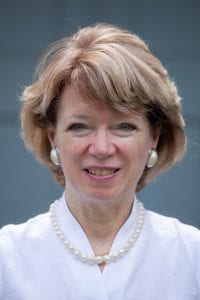 Julia Bland is the Executive Director of Louisiana Children’s Museum. Ms. Bland, a long-time resident of New Orleans, is responsible for the Museum’s overall management. Before becoming Director of LCM, Ms. Bland served the Museum as a fundraising consultant and board member. She also chaired the Children’s World’s Fair for two years. Ms. Bland has been honored as a YWCA Role Model, a two-time City Business Woman of the Year, and a Young Leadership Council role model of the year. Ms. Bland is intimately involved in children’s issues and the promotion of child well-being. The Children’s Museum is now leading an initiative focusing on community-wide early childhood and family learning through their Early Learning Village. Ms. Bland has also served on numerous panels and legislative hearings for early childhood education. Ms. Bland has a Bachelor of Arts degree in Art History from Tulane University’s Newcomb College.
Julia Bland is the Executive Director of Louisiana Children’s Museum. Ms. Bland, a long-time resident of New Orleans, is responsible for the Museum’s overall management. Before becoming Director of LCM, Ms. Bland served the Museum as a fundraising consultant and board member. She also chaired the Children’s World’s Fair for two years. Ms. Bland has been honored as a YWCA Role Model, a two-time City Business Woman of the Year, and a Young Leadership Council role model of the year. Ms. Bland is intimately involved in children’s issues and the promotion of child well-being. The Children’s Museum is now leading an initiative focusing on community-wide early childhood and family learning through their Early Learning Village. Ms. Bland has also served on numerous panels and legislative hearings for early childhood education. Ms. Bland has a Bachelor of Arts degree in Art History from Tulane University’s Newcomb College.




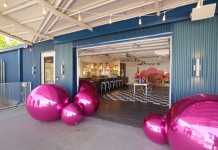

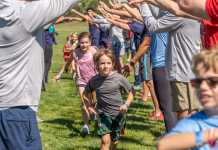




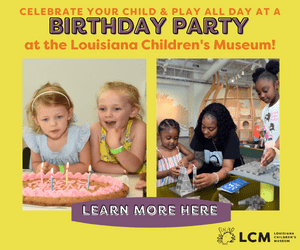
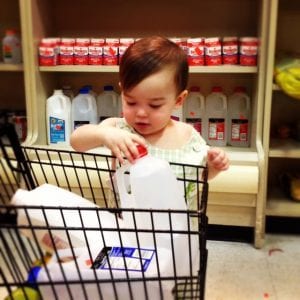
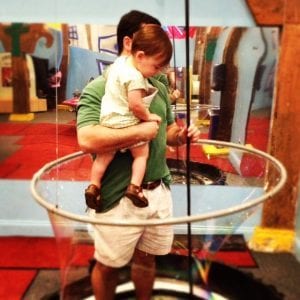

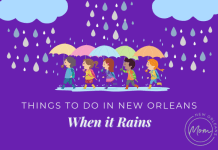
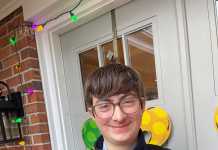


We took Jane to the Children’s Museum in St. Louis when we were in town visiting some friends. At seven months old, I thought she would be more of an observer than a participant at the museum. Boy, was I wrong! She loved to touch and feel and listen and see everything around her. It was amazing to watch her learn through these new experiences. Next weekend, we will be heading to our museum to sign up for a membership. I love having this resource so close by so that Jane can continue to be wowed by the things around her!